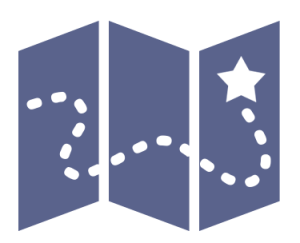Turning Problems Into Gifts And Enemies Into Friends (Coaches Corner, Episode 10)
Imagine if every problem in your musical life was actually a gift… Here are the two key ingredients you need, to make that happen.

Along with melody and harmony, rhythm is part of the core foundation of all music. Whatever the genre, era, instrument, player or context of music – it’s the rhythm that provides the driving force to keep our ears tuned in and satisfy our deep instinctive appreciation of music more than anything else.
Because rhythm is such a fundamental aspect of music, ear training for rhythm is relevant and can be hugely beneficial to musicians and music fans from all corners of the musical universe. From the bass player providing that funky bassline in a band and the drummer keeping a rock-steady beat, to the composer looking for a catchy riff to perk up a section of his score, or the passionate dancer who wants their performance to be so tightly attuned to the backing music the audience can’t help but sit up and take notice, rhythm ear training is key.
 |
The bass guitar and other bass instruments are often classed as part of the ‘rhythm section’ in a band or ensemble, and players of bass instruments are relied on to provide the rhythmic bed on which the rest of the music depends. Our Bass Tone series helps bass players find the optimal sounds for their instrument in different situations, and helps other musicians and music fans to appreciate the variety of ways the bass contributes to music. |
Watch a short video introducing the music theory behind rhythm:
| The overall pace of the rhythm of music is called the tempo and no study of rhythmic ear training would be complete without also developing a reliable and accurate sense of tempo. | |
| Along with percussion instruments, bass instruments are probably those most commonly associated with rhythm. While most instruments contribute primarily in terms of melody and/or harmony, bass instruments straddle the pitch and the rhythm camps, contributing as much through when they play notes as by which notes they play. Whether you’re a bassist yourself or not, ear training for bass will improve your understanding of its essential contribution to most music. | |
| The percussion family of instruments features all the most purely rhythmic of instruments. If you’re interested in developing your sense of rhythm, stripping away the pitch and harmony aspects of music can make devoted ear training easier – and focusing your attention on percussion instruments is a great way to do that. You can delve into percussion ear training with a look at the rock drum kit, the orchestra percussion section, simple hand-held instruments – or even just the clapping of your hands! |
 Inside Musical U you’ll find a set of ear training modules for tightening up your sense of rhythm, along with learning to write down rhythms you hear and read rhythms from notation in an easy way.
Inside Musical U you’ll find a set of ear training modules for tightening up your sense of rhythm, along with learning to write down rhythms you hear and read rhythms from notation in an easy way.
→ Learn more about Musical U membership
 This roadmap will help you “get rhythm”, meaning both that you’ll understand rhythm and improve your own sense of rhythm. Good rhythm is often associated with drummers and bassists but having strong rhythm skills is in fact important for every musician.
This roadmap will help you “get rhythm”, meaning both that you’ll understand rhythm and improve your own sense of rhythm. Good rhythm is often associated with drummers and bassists but having strong rhythm skills is in fact important for every musician.
By the end of this roadmap you will have a solid sense of the pulse of music: an “inner metronome”. You will be able to read and write rhythm notation for the kinds of pattern you hear and play in real music. You will also get familiar with the lively art of syncopation which can bring vitality and expressive power to your playing.
Learn about rhythm and how it can help your musicianship.
After completing this module: You will understand the importance of rhythm and how to identify and play simple rhythms yourself.
Learn about syncopation and the pulse, upbeats and downbeats, tempo, and straight vs. swung jazz rhythm.
After completing this module: You will understand simple rhythms, downbeats and upbeats, and straight vs. swung jazz rhythm.
Discover two methods you can use to speak out a rhythmic pattern from written notation or know how to write down a rhythm you’ve heard: the count chant method and the Kodály method.
After completing this module: you will understand two methods for speaking out rhythmic patterns.
Practise your basic rhythm skills. Identify core rhythm concepts that you have learned so far like syncopation, tempo, and the pulse.
After completing this module: you will be able to identify syncopation and tap or play along with rhythm examples.
Practise making the connection between heard rhythms and traditional score notation, so that you can easily read or write down rhythms.
After completing this module: you will be able to read quarter, 8th and 16th note rhythms from notation and write them down when you hear them.
Apply your rhythm skills to identify, notate, and practice popular global rhythms including Rock, Pop, Jazz, and Latin beats.
After completing this module: you will be able to play and notate popular rhythms from around the world.
Imagine if every problem in your musical life was actually a gift… Here are the two key ingredients you need, to make that happen.
If you’ve ever been curious about the Indian rhythmic language of konnakol, you’ll love trying this mini tutorial with Alex Ostapenko!
Meet Alex Ostapenko, a master of both the Indian rhythmic language konnakol and body percussion techniques, and combining both!
How can you gear up to a big performance without being overwhelmed or intimidated? Find out the answer, plus more tips, in this episode!
Drummer Dave Smith teaches a powerful stepping-based method for improving your connection to the pulse, your sense of rhythm and your ability to both perform and be creative with different rhythmic patterns.
Ever felt like your rhythm skills aren’t quite what they should be – but you really didn’t know what you could do about that? We’ve found that typically, the rhythm side of things is massively overlooked by music learners.
Dive into rhythmic improvisation in this segment of Jeffrey Agrell’s Musical U masterclass on “Exploring Rhythmic Improv”. Jeffrey introduces a rhythm vocabulary, using simple hand-drumming as a way to experiment and explore.
Professor Henkjan Honing, a leading researcher of biomusicology, shares results from his research on how human musicality works and where it comes from.
The popular Foundations of A Musical Mind course is back – and enrolment is now open! Reserve your place and get ready to level up your musicianship.
Learn about an intuitive, highly effective model for counting rhythm, and how it can help you easily notate and play complex patterns in music.
Learn about the rhythmic tradition of clave, its widespread use in traditional and contemporary music, and how to play the rhythm yourself.
Learn about Toccata Blocks, a exciting hands-on tool that makes it easy for anyone to learn rhythm – no confusing diagrams or fractions required!